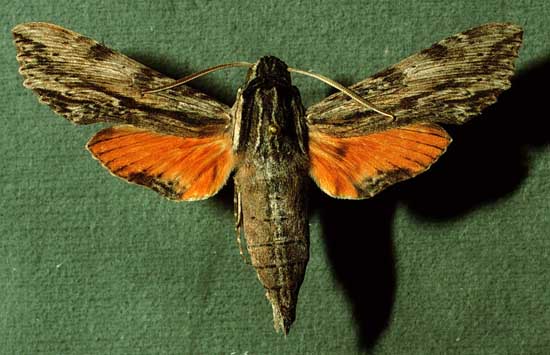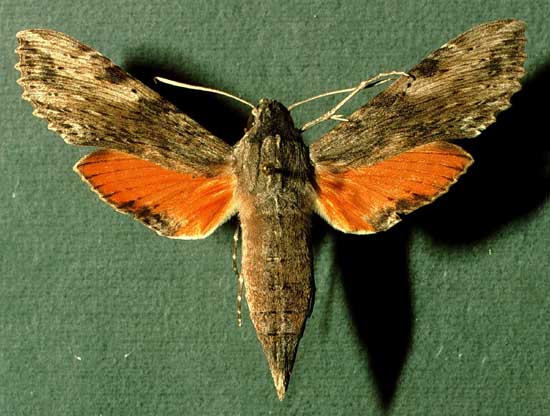ERINNYIS OBSCURA
Obscure Sphinx Moth

Erinnyis obscura male courtesy of Dan Janzen.
This site has been created by
Bill Oehlke at oehlkew@islandtelecom.com
Comments, suggestions and/or additional information are welcomed by Bill.
TAXONOMY:
Family: Sphingidae, Latreille, 1802
Subfamily: Macroglossinae, Harris, 1839
Tribe: Dilophonotini, Burmeister, 1878
Genus: Erinnyis Hubner, [1819] ...........
Species: obscura Schaus
1898
|
MIDI MUSIC
.....It's a Wonderful World.....
copyright C. Odenkirk
ON.OFF
<bgsound src="world.mid" LOOP=FOREVER>
|
DISTRIBUTION:
The Obscure sphinx, Erinnyis obscura
(Wing span: 3 1/4 - 3 3/4 inches (8.3 - 9.5 cm)),
flies in tropical and subtropical lowlands and foothills
from Paraguay north through Central America, Mexico, and the West Indies. This species strays north to southern
Florida (specimen type locality), southern Texas, Arizona, and southern California.
The upperside of the abdomen is gray, without black bands, and the underside does not have black spots.
The upperside of the forewing is dark brown, and it may have pale yellow-brown patches at the tip and along the
inner edge. The upperside of the hindwing is dull orange with a narrow black border.
FLIGHT TIMES:
Erinnyis obscura broods continuously in the tropics and in south Florida.
During the night adults nectar at flowers, including bouncing bet (Saponaria officinalis).
Moths are on the
wing from July-August in the southern United States. In Costa Rica moths have been taken in all months except February and March.
ECLOSION:Adults eclose from pupae formed in loose cocoons spun among surface litter.
Pupal stage can be as few as fourteen days.
SCENTING AND MATING:Females call in the males with a pheromone released from a gland at the tip of
the abdomen.  Erinnyis obscura female courtesy of Dan Janzen.
EGGS, LARVAE, PUPAE:Larvae probably feed on various plants in the dogbane family (Apocynaceae):
Rauvolfia ligustrina, Rauvolfia tetraphylla, Stemmadenia obovata.
Return to U. S. A. Table
Return to Sphingidae Index
Return to Dilophonotini Tribe
|

